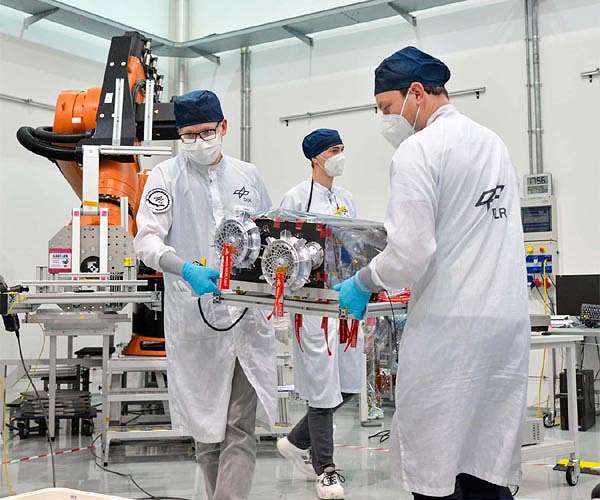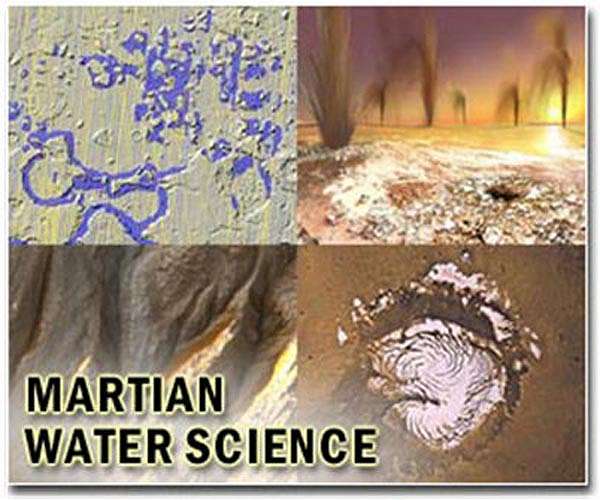NASA and JAXA advance Martian Moons study with instrument handoff
by Clarence Oxford
Los Angeles CA (SPX) Mar 17, 2024
On March 14, NASA completed the delivery of its innovative gamma-ray and neutron spectrometer to the Japan Aerospace Exploration Agency (JAXA) for its incorporation into the Martian Moons eXploration (MMX) mission spacecraft, marking a significant milestone in preparation for the mission’s final system-level testing. Developed by the Johns Hopkins Applied Physics Laboratory (APL) in collaboration with the Lawrence Livermore National Laboratory (LLNL), the Mars-moon Exploration with Gamma Ray and Neutrons (MEGANE) instrument is set to play a pivotal role in the MMX mission. This mission is focused on analyzing the composition and origins of Mars’ moons, Phobos and Deimos, and aims to return a sample from Phobos back to Earth.
The research initiative seeks to determine whether these moons are the remnants of a significant collision between Mars and another large body or if they were asteroids captured by Mars’ gravitational pull. Through the detection of neutrons and gamma rays emitted from Phobos’ surface, MEGANE will unveil the moon’s elemental composition, providing insights into its likely genesis.
Thomas Statler, the MEGANE program scientist at NASA Headquarters, emphasized the instrument’s critical role in the mission, highlighting NASA’s ongoing partnership with JAXA in this innovative endeavor. “Seeing MEGANE ready for integration signifies a crucial advancement in our joint mission to unravel the mysteries of the Martian moons,” Statler remarked.
The authorization to ship MEGANE to Japan came after the project’s standing review board confirmed its readiness, concluding a rigorous six-year development phase that adhered to NASA’s stringent budget and schedule requirements. David Lawrence, APL’s principal investigator for MEGANE, reflected on the challenges overcome in reaching this stage and expressed eagerness to see the instrument’s performance alongside other spacecraft components.
With MEGANE’s arrival in Japan, the MMX team is set to commence the integration of scientific instruments and spacecraft components, followed by a comprehensive testing phase. The mission is slated for a 2026 launch aboard a JAXA H3 rocket. Sarah Bucior, space systems engineer and MEGANE I&T Lead Engineer, shared her anticipation for the upcoming integration and test operations, emphasizing her passion for rocketry and spacecraft development.
The MEGANE project falls under NASA’s Discovery Program, designed to facilitate affordable space exploration. Managed by the Marshall Space Flight Center for NASA’s Science Mission Directorate, the program encompasses a team of investigators from APL, LLNL, Marietta College, NASA’s Ames Research Center, and JAXA.
Related Links
MEGANE and MMX mission at APL
Mars News and Information at MarsDaily.com
Lunar Dreams and more



